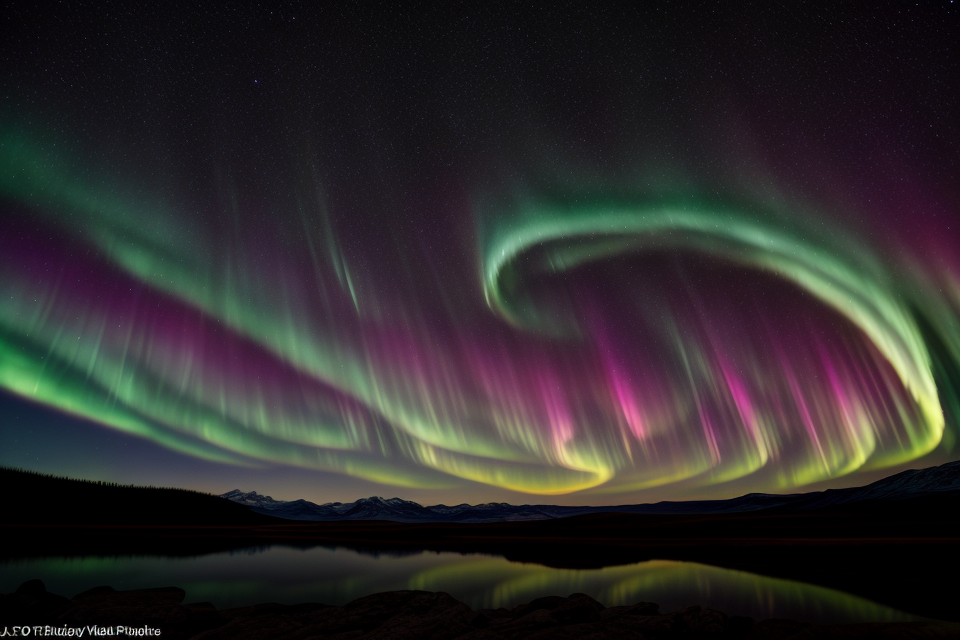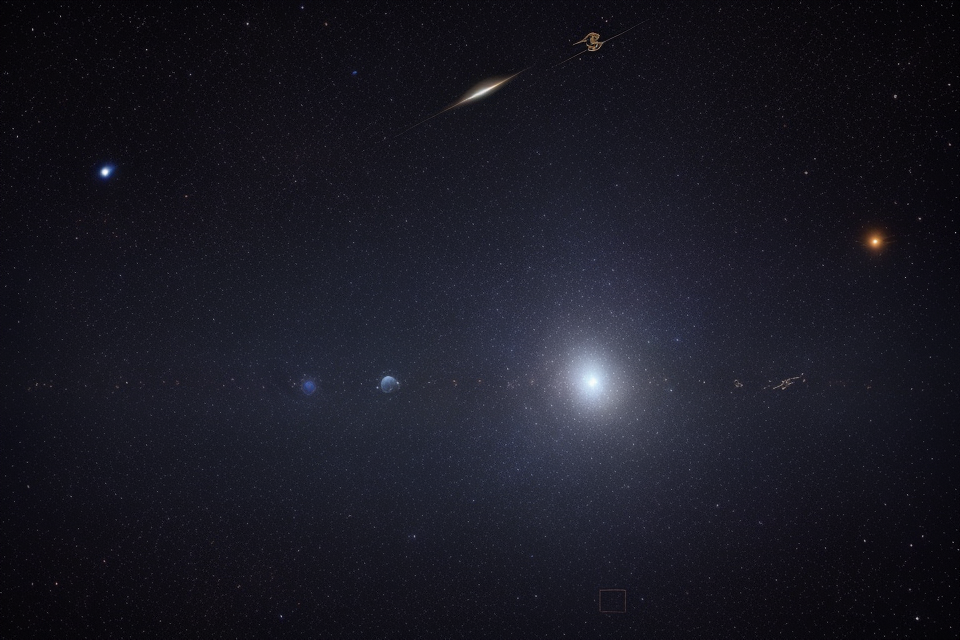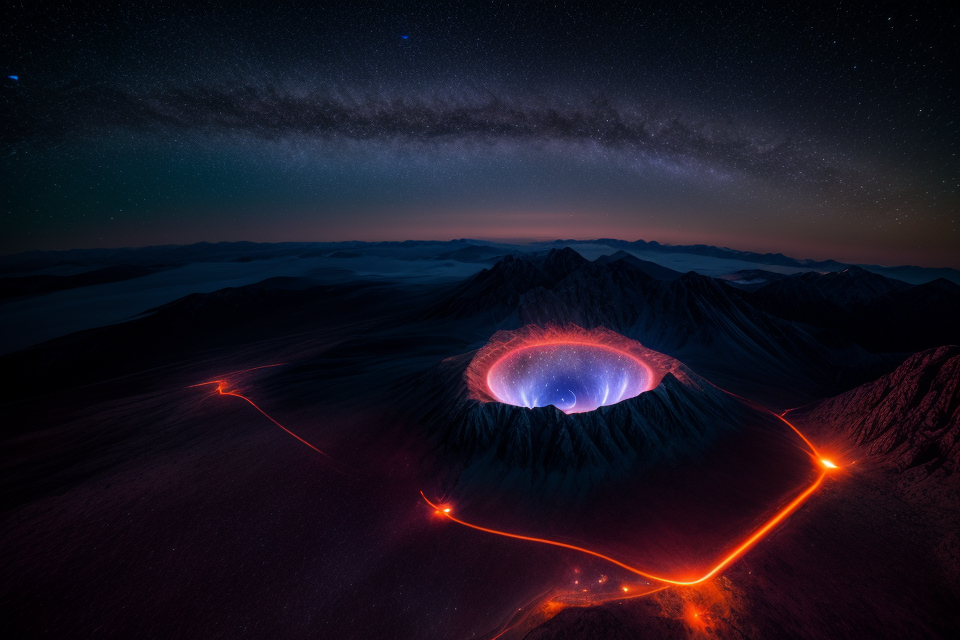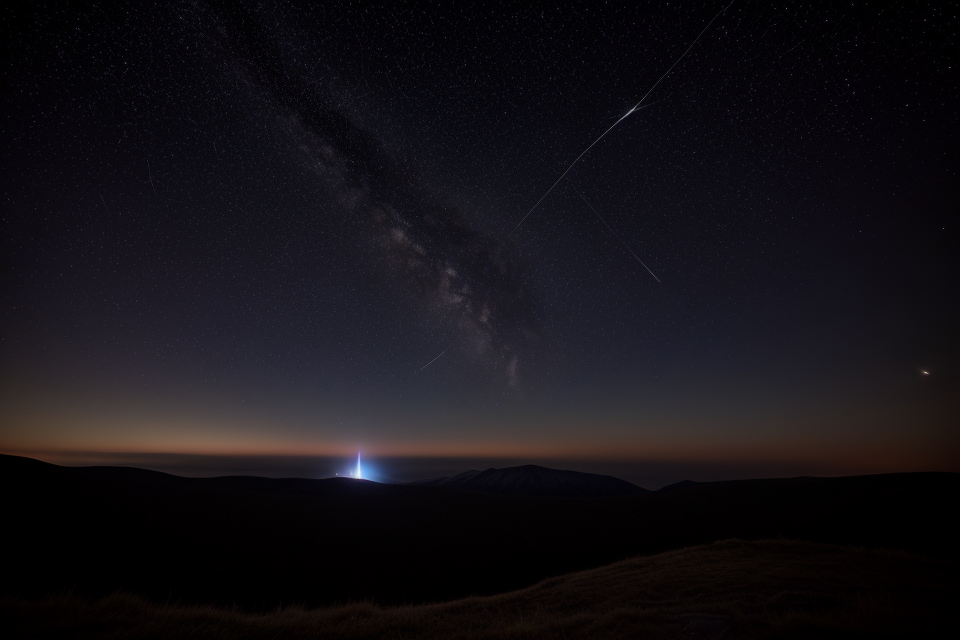Have you ever gazed up at the night sky and wondered about the rare events that unfold there? From shooting stars to lunar eclipses, the sky is full of wonders that leave us in awe. In this comprehensive guide, we will explore some of the rarest and most spectacular events that light up the night sky. Get ready to be captivated by the magic of the universe as we take a journey through the celestial world of rare sky events.
Types of Rare Sky Events
Solar Eclipses
Total vs. Partial Solar Eclipses
Solar eclipses are a fascinating phenomenon that occurs when the Moon passes between the Earth and the Sun, blocking the Sun’s light and creating a shadow on the Earth’s surface. There are two types of solar eclipses: total and partial.
- Total Solar Eclipse: During a total solar eclipse, the Moon completely covers the Sun’s disk, resulting in a momentary disappearance of the Sun’s light. This rare event is only visible from a narrow path on the Earth’s surface known as the “path of totality.”
- Partial Solar Eclipse: In contrast, during a partial solar eclipse, the Moon only partially covers the Sun’s disk, resulting in a crescent-shaped shadow on the Earth’s surface. This type of eclipse is visible in a much larger area than a total solar eclipse, but it is still a remarkable sight to behold.
What Causes Solar Eclipses
Solar eclipses occur when the Moon passes between the Earth and the Sun, and the alignment of the three celestial bodies is precise. The Moon’s orbit is not perfectly circular, and its distance from the Earth varies throughout the month. When the Moon is at its closest point to the Earth (known as “perigee”), it appears larger in the sky, and it is more likely to cover the Sun’s disk during an eclipse.
The Moon’s orbit is also tilted with respect to the Earth’s orbit around the Sun, so it rarely passes directly between the Earth and the Sun. However, there are times when the Moon’s shadow falls on the Earth, and a solar eclipse occurs.
Where and When Solar Eclipses Occur
Solar eclipses can only occur during a new moon, when the Moon is in the right position to cast a shadow on the Earth. The shadow of the Moon is about 200 miles wide, and it is only visible from a narrow path on the Earth’s surface. The path of totality, where a total solar eclipse can be seen, is only about 100 miles wide.
Solar eclipses can occur anywhere on the Earth, but they are most commonly seen in the “eclipse belt” between the 30th and 60th degrees of latitude. The frequency of solar eclipses also varies, with an average of two or three total solar eclipses visible from any one location in a lifetime.
Lunar Eclipses
Lunar eclipses are a type of rare sky event that occurs when the Earth comes between the Sun and the Moon, casting a shadow on the Moon’s surface. There are two types of lunar eclipses: total and partial.
Total vs. Partial Lunar Eclipses
A total lunar eclipse occurs when the Earth’s shadow completely covers the Moon’s surface, causing it to appear dark red or blood-colored. This happens because the Earth’s atmosphere scatters the Sun’s blue light, leaving only the red light to pass through and reach the Moon.
A partial lunar eclipse occurs when only a portion of the Earth’s shadow covers the Moon’s surface, resulting in a dimming of the Moon’s light. Unlike a total lunar eclipse, the Moon does not turn red during a partial lunar eclipse.
What Causes Lunar Eclipses
Lunar eclipses occur when the Moon, Earth, and Sun are aligned in a straight line, with the Earth in the middle. This alignment is known as a syzygy. Syzygies occur approximately twice a year, but not every syzygy results in a lunar eclipse.
Where and When Lunar Eclipses Occur
Lunar eclipses can occur on any day of the month, but they are more common during the full moon phase. The timing of a lunar eclipse depends on the position of the Earth and the Moon in their orbits around the Sun.
Lunar eclipses are visible from anywhere on the Earth where the Moon is above the horizon. However, the visibility of a lunar eclipse depends on the observer’s location and the weather conditions. In some cases, a lunar eclipse may not be visible from a particular location due to weather or time zone differences.
In summary, lunar eclipses are rare sky events that occur when the Earth’s shadow falls on the Moon’s surface. There are two types of lunar eclipses: total and partial. Lunar eclipses occur due to the alignment of the Earth, Moon, and Sun, and they can be seen from anywhere on the Earth where the Moon is above the horizon.
Meteor Showers
Meteor showers are one of the most spectacular and rare sky events that can be witnessed by people all around the world. These electrifying celestial events occur when the Earth passes through a cloud of debris left behind by a comet or an asteroid. As the debris enters the Earth’s atmosphere, it burns up due to friction, causing a streak of light that is visible in the sky.
There are several different types of meteor showers that occur throughout the year, each with its own unique characteristics and features. Some of the most popular meteor showers include the Perseids, the Geminids, and the Quadrantids.
The Perseids, which occur every year in August, are one of the most well-known meteor showers. They are caused by the comet Swift-Tuttle, which leaves a trail of debris in its wake as it orbits the Sun. The Geminids, which occur in December, are another popular meteor shower that is caused by the asteroid 3200 Phaethon. Finally, the Quadrantids, which occur in January, are caused by an asteroid known as 2003 EH1.
When and where to watch meteor showers depends on the specific event and the time of year. Some meteor showers are best viewed in the Northern Hemisphere, while others are best viewed in the Southern Hemisphere. It is important to note that meteor showers can be affected by weather conditions, so it is best to check the forecast before planning a viewing session.
Overall, meteor showers are a truly awe-inspiring experience that should not be missed. Whether you are an experienced stargazer or a beginner, witnessing these rare sky events is sure to leave you in awe of the beauty and majesty of the universe.
Comets
Comets are celestial bodies that orbits the sun and are composed of ice and dust. They are often referred to as “dirty snowballs” due to their composition. Comets are unique in that they are the only objects in the solar system that can be directly linked to the formation of the system itself.
There are two main types of comets: short-period comets and long-period comets. Short-period comets have orbits that last less than 200 years and are thought to originate from the Kuiper Belt, a region of the solar system beyond Neptune. Long-period comets have orbits that last more than 200 years and are thought to originate from the Oort Cloud, a region of the solar system that is even further away from the sun.
Comets are typically small, ranging in size from a few hundred meters to a few kilometers. However, the coma, or the cloud of gas and dust that surrounds the comet’s nucleus, can be much larger. The coma is created as the comet approaches the sun and the ice and dust in the nucleus sublimates, or turns from a solid to a gas.
Comets are often difficult to spot in the sky because they are usually very faint. However, they can be visible to the naked eye if they are bright enough. To spot a comet, it is best to look for it in the late evening or early morning, when the sky is dark and the comet is highest in the sky. A comet can also be spotted by looking for a faint, fuzzy patch of light in the sky that moves over time.
Stellar Events
Supernovae
Supernovae are one of the most luminous and powerful events in the universe. They occur when a star reaches the end of its life and its core collapses, causing a massive explosion that can outshine an entire galaxy for weeks or even months. These explosions can be observed from billions of light-years away and are a critical source of heavy elements, such as gold and silver, which are essential for the formation of planets and life.
Nova Outbursts
Nova outbursts are less powerful than supernovae but still a fascinating astronomical event. They occur when a white dwarf star in a binary system gains enough matter from its companion star to trigger a thermonuclear reaction, causing a sudden increase in brightness. Novas can be observed for weeks or months and can provide insights into the life cycle of stars and the formation of planetary systems.
Variable Stars
Variable stars are stars whose brightness changes over time, often due to changes in their surface temperature or luminosity. They can be classified into several types, including pulsating stars, which change brightness due to oscillations in their atmosphere, and eclipsing binaries, which periodically obscure each other’s light as they orbit. Variable stars can be used to study the evolution of stars and the structure of the Milky Way galaxy.
Rare Celestial Phenomena
Auroras
Auroras, also known as the northern or southern lights, are a stunning celestial phenomenon that occurs in the polar regions of the Earth. These electrically charged atmospheric optical phenomena are caused by the collision of charged particles from the sun with the Earth’s atmosphere. The vibrant colors of auroras, typically seen in shades of green, blue, and red, are a result of the interaction between these charged particles and the oxygen and nitrogen molecules in the upper atmosphere. Auroras are most commonly visible in the polar regions during the winter months, when the night sky is dark and the atmosphere is still.
Solar Flares
Solar flares are powerful bursts of energy that occur on the surface of the sun. These explosive events are caused by the release of magnetic energy that has been building up in the sun’s atmosphere. Solar flares can be incredibly powerful, releasing as much energy in a few minutes as the sun does in hundreds of thousands of years. These powerful bursts of energy can cause a range of effects on the Earth, including disrupting communication systems, causing auroras to appear in the polar regions, and even causing the Earth’s magnetic field to shift.
Gamma-Ray Bursts
Gamma-ray bursts are the most powerful explosions in the universe, releasing energy in the form of high-energy gamma rays. These bursts are thought to be caused by the collision of two neutron stars or the collapse of a massive star. Gamma-ray bursts can be incredibly difficult to detect, as they occur in distant galaxies and are often blocked by dust and other materials. However, when they are detected, they can provide valuable insights into the structure and evolution of the universe.
Tips for Observing Rare Sky Events
When it comes to observing rare sky events, there are several tips that can help you make the most of your stargazing experience. Here are some essential tips to keep in mind:
Choosing the Right Location
Choosing the right location is crucial when it comes to observing rare sky events. Look for a location that is far away from any sources of light pollution, such as cities or industrial areas. Ideally, you should choose a location that is high up and offers a clear view of the sky. If possible, try to find a location that is close to the equator, as this will give you the best chance of seeing rare celestial events.
Best Times of the Year to Observe
The best times of the year to observe rare sky events vary depending on the event you are looking for. For example, if you want to observe the Perseid meteor shower, the best time to observe is between mid-July and mid-August. However, if you want to observe the Geminids meteor shower, the best time to observe is between mid-December and early January. It’s essential to research the specific event you want to observe and find out when the best time to observe it is.
Essential Equipment for Stargazing
To observe rare sky events, you will need some essential equipment. First and foremost, you will need a pair of binoculars or a telescope. Binoculars are great for scanning the sky and picking out details, while a telescope is ideal for viewing specific objects in detail. You will also need a comfortable chair or blanket to sit on, as well as warm clothing and a flashlight. It’s also a good idea to bring some snacks and drinks to keep you fueled during your stargazing session.
By following these tips, you can increase your chances of observing rare sky events and enjoying a truly unforgettable stargazing experience.
The Science Behind Rare Sky Events
What Causes These Phenomena
Rare sky events are often caused by celestial objects moving and interacting with each other in unique ways. For example, solar eclipses occur when the Moon passes between the Earth and the Sun, blocking the Sun’s light and creating a temporary darkness in the sky. Similarly, lunar eclipses happen when the Earth passes between the Sun and the Moon, casting a shadow on the Moon’s surface.
How Astronomers Study These Events
Astronomers use a variety of techniques to study rare sky events. They use telescopes to observe these events and take detailed measurements, such as the position and movement of celestial objects. They also use computer simulations to model the behavior of these objects and predict future events.
Advances in Astronomical Technology
Advances in technology have greatly enhanced our ability to study rare sky events. For example, the development of powerful telescopes has allowed astronomers to observe these events in greater detail than ever before. Additionally, new computer simulations have enabled astronomers to better understand the complex interactions between celestial objects and predict future events with greater accuracy. These advances have helped to unlock new insights into the universe and its mysteries.
Inspiring Stories from the History of Astronomy
Astronomy has a rich and fascinating history, filled with countless stories of passionate individuals who dedicated their lives to unlocking the mysteries of the universe. This section will explore some of the most inspiring stories from the history of astronomy, highlighting the groundbreaking discoveries made by famous astronomers and the pivotal moments that have shaped the field.
Famous Astronomers and Their Discoveries
Throughout history, there have been many notable astronomers who have made significant contributions to our understanding of the universe. Some of the most famous include:
- Nicolaus Copernicus: A Polish astronomer who proposed the heliocentric model of the solar system, in which the Sun is at the center and the planets orbit around it.
- Galileo Galilei: An Italian astronomer who is perhaps best known for his observations of the night sky, which included the discovery of four moons orbiting Jupiter.
- Isaac Newton: An English physicist and mathematician who formulated the laws of motion and universal gravitation, which fundamentally changed our understanding of the universe.
- Carl Sagan: An American astronomer and cosmologist who popularized the field of astronomy through his television series “Cosmos: A Personal Voyage.”
Pivotal Moments in Astronomical History
There have been many pivotal moments in the history of astronomy that have shaped the field as we know it today. Some of the most significant include:
- The invention of the telescope: The invention of the telescope in the early 17th century revolutionized astronomy, allowing astronomers to observe celestial objects in greater detail than ever before.
- The discovery of the electromagnetic spectrum: The discovery of the electromagnetic spectrum in the 19th century allowed astronomers to study objects in the universe beyond just visible light, opening up new possibilities for exploration and discovery.
- The discovery of the cosmic microwave background radiation: The discovery of the cosmic microwave background radiation in 1964 provided strong evidence for the Big Bang theory and fundamentally changed our understanding of the universe.
The Impact of Astronomy on Society
Astronomy has had a profound impact on society, influencing everything from art and culture to science and technology. Some of the ways in which astronomy has impacted society include:
- The development of timekeeping: The need to accurately measure the positions of celestial objects led to the development of timekeeping techniques, which in turn revolutionized the way we understand and navigate the world.
- The inspiration of art and literature: The beauty and mystery of the night sky has inspired countless works of art and literature, from poetry and painting to music and dance.
- The advancement of science and technology: Astronomy has played a key role in the development of many scientific and technological fields, from optics and physics to computer science and engineering.
FAQs
1. What are rare sky events?
Rare sky events are astronomical occurrences that are not commonly seen in the sky. These events can include meteor showers, solar eclipses, and conjunctions of planets and stars. These events are often fascinating to observe and can provide unique opportunities for stargazers to witness the wonders of the universe.
2. What is a meteor shower?
A meteor shower is a celestial event in which a large number of meteors, or shooting stars, appear in the sky over a short period of time. Meteor showers occur when the Earth passes through a trail of debris left behind by a comet or asteroid. The meteors are caused by small particles burning up in the Earth’s atmosphere.
3. What is a solar eclipse?
A solar eclipse occurs when the Moon passes between the Earth and the Sun, blocking the Sun’s light and creating a shadow on the Earth. A total solar eclipse, in which the Moon completely covers the Sun’s disk, is a rare event that can only be seen from a specific location on the Earth’s surface.
4. What is a conjunction?
A conjunction is the apparent close approach of two celestial objects, such as planets or stars, as seen from the Earth. Conjunctions can be easily observed with the naked eye and can provide unique opportunities for stargazers to study the positions and movements of celestial objects.
5. How can I observe rare sky events?
To observe rare sky events, it is important to find a location with a clear view of the sky and to use appropriate equipment, such as a telescope or binoculars. It is also important to check the weather and the phase of the Moon, as these factors can affect the visibility of the event. There are also many online resources and astronomy clubs that can provide information and advice on observing rare sky events.



